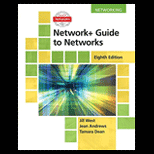Problem 13-4 This problem consists of 10 questions. Answers to parts a and b should both be sketched on the grid provided below. Label each number. (a) Sketch the complex number 21 = 2e- (b) Sketch the complex number 22 = 21. (21 is defined in part a.) Imaginary 0 Real (c) Determine the magnitude of the complex number 23-3+j4. ||23|= (d) Write the complex number 24 = 2e in rectangular form: 24= =e (e) How many solutions are there to the equation 223 e? You do not have to find the solutions; you just need to say how many solutions there are. Answer: (f) Consider the FIR filter described by the following difference equation: yn 2rn-k +10 k=-5 Is this system causal? Circle your answer: Causal Not Causal (g) Consider the signal r(t) = 5 + cos(2x (80)4). Which of the following sampling rates can be used to sample (!) without aliasing? Circle all sample rates that will work. 5 Hz 40 Hz 80 Hz 100 Hz. 200 Hz 320 Hz (h) The plot below shows the spectrum of the signal x(t): 4 3- 2 2.0 14.0 2.0 -10-9-8-7-6-5-4-3-2-1 0 1 2 3 4 5 6 7 8 9 10 Frequency (Hz) Write an equation for (). x(t) = (i) Suppose that the frequency response of a discrete-time LTI system is H() Determine the output of the system when the input is [n] = " yn= = 2 + 2 cos(ŵ). (j) Consider a discrete-time FIR system defined by the following difference equation: 2 05-420 ynn-k] bo=1, b₁ = 3, b₂ = 5. k=0 Determine and sketch the impulse response h[n] of the system. Sketch of h[n]:
Problem 13-4 This problem consists of 10 questions. Answers to parts a and b should both be sketched on the grid provided below. Label each number. (a) Sketch the complex number 21 = 2e- (b) Sketch the complex number 22 = 21. (21 is defined in part a.) Imaginary 0 Real (c) Determine the magnitude of the complex number 23-3+j4. ||23|= (d) Write the complex number 24 = 2e in rectangular form: 24= =e (e) How many solutions are there to the equation 223 e? You do not have to find the solutions; you just need to say how many solutions there are. Answer: (f) Consider the FIR filter described by the following difference equation: yn 2rn-k +10 k=-5 Is this system causal? Circle your answer: Causal Not Causal (g) Consider the signal r(t) = 5 + cos(2x (80)4). Which of the following sampling rates can be used to sample (!) without aliasing? Circle all sample rates that will work. 5 Hz 40 Hz 80 Hz 100 Hz. 200 Hz 320 Hz (h) The plot below shows the spectrum of the signal x(t): 4 3- 2 2.0 14.0 2.0 -10-9-8-7-6-5-4-3-2-1 0 1 2 3 4 5 6 7 8 9 10 Frequency (Hz) Write an equation for (). x(t) = (i) Suppose that the frequency response of a discrete-time LTI system is H() Determine the output of the system when the input is [n] = " yn= = 2 + 2 cos(ŵ). (j) Consider a discrete-time FIR system defined by the following difference equation: 2 05-420 ynn-k] bo=1, b₁ = 3, b₂ = 5. k=0 Determine and sketch the impulse response h[n] of the system. Sketch of h[n]:
Computer Networking: A Top-Down Approach (7th Edition)
7th Edition
ISBN:9780133594140
Author:James Kurose, Keith Ross
Publisher:James Kurose, Keith Ross
Chapter1: Computer Networks And The Internet
Section: Chapter Questions
Problem R1RQ: What is the difference between a host and an end system? List several different types of end...
Related questions
Question
I need help with this problem and an step by step explanation of the solution from the image described below. (Introduction to Signals and Systems)

Transcribed Image Text:Problem 13-4
This problem consists of 10 questions.
Answers to parts a and b should both be sketched on the grid provided below. Label each number.
(a) Sketch the complex number 21 = 2e-
(b) Sketch the complex number 22 = 21. (21 is defined in part a.)
Imaginary
0
Real
(c) Determine the magnitude of the complex number 23-3+j4.
||23|=
(d) Write the complex number 24 = 2e in rectangular form:
24=
=e
(e) How many solutions are there to the equation 223 e?
You do not have to find the solutions; you just need to say how many solutions there are.
Answer:
(f) Consider the FIR filter described by the following difference equation:
yn 2rn-k
+10
k=-5
Is this system causal? Circle your answer:
Causal
Not Causal
![(g) Consider the signal r(t) = 5 + cos(2x (80)4). Which of the following sampling rates can be used
to sample (!) without aliasing? Circle all sample rates that will work.
5 Hz 40 Hz
80 Hz
100 Hz.
200 Hz
320 Hz
(h) The plot below shows the spectrum of the signal x(t):
4
3-
2
2.0
14.0
2.0
-10-9-8-7-6-5-4-3-2-1 0 1 2 3 4 5 6 7 8 9 10
Frequency (Hz)
Write an equation for ().
x(t) =
(i) Suppose that the frequency response of a discrete-time LTI system is H()
Determine the output of the system when the input is [n] = "
yn=
= 2 + 2 cos(ŵ).
(j) Consider a discrete-time FIR system defined by the following difference equation:
2
05-420
ynn-k] bo=1, b₁ = 3, b₂ = 5.
k=0
Determine and sketch the impulse response h[n] of the system.
Sketch of h[n]:](/v2/_next/image?url=https%3A%2F%2Fcontent.bartleby.com%2Fqna-images%2Fquestion%2Fea56b2d3-976b-48ba-b1de-ef5a4d536379%2F73ab4f09-28bd-4e8a-9ef6-8ba886759fc7%2Fv4hxadm_processed.jpeg&w=3840&q=75)
Transcribed Image Text:(g) Consider the signal r(t) = 5 + cos(2x (80)4). Which of the following sampling rates can be used
to sample (!) without aliasing? Circle all sample rates that will work.
5 Hz 40 Hz
80 Hz
100 Hz.
200 Hz
320 Hz
(h) The plot below shows the spectrum of the signal x(t):
4
3-
2
2.0
14.0
2.0
-10-9-8-7-6-5-4-3-2-1 0 1 2 3 4 5 6 7 8 9 10
Frequency (Hz)
Write an equation for ().
x(t) =
(i) Suppose that the frequency response of a discrete-time LTI system is H()
Determine the output of the system when the input is [n] = "
yn=
= 2 + 2 cos(ŵ).
(j) Consider a discrete-time FIR system defined by the following difference equation:
2
05-420
ynn-k] bo=1, b₁ = 3, b₂ = 5.
k=0
Determine and sketch the impulse response h[n] of the system.
Sketch of h[n]:
Expert Solution
This question has been solved!
Explore an expertly crafted, step-by-step solution for a thorough understanding of key concepts.
Step by step
Solved in 2 steps with 11 images

Recommended textbooks for you

Computer Networking: A Top-Down Approach (7th Edi…
Computer Engineering
ISBN:
9780133594140
Author:
James Kurose, Keith Ross
Publisher:
PEARSON

Computer Organization and Design MIPS Edition, Fi…
Computer Engineering
ISBN:
9780124077263
Author:
David A. Patterson, John L. Hennessy
Publisher:
Elsevier Science

Network+ Guide to Networks (MindTap Course List)
Computer Engineering
ISBN:
9781337569330
Author:
Jill West, Tamara Dean, Jean Andrews
Publisher:
Cengage Learning

Computer Networking: A Top-Down Approach (7th Edi…
Computer Engineering
ISBN:
9780133594140
Author:
James Kurose, Keith Ross
Publisher:
PEARSON

Computer Organization and Design MIPS Edition, Fi…
Computer Engineering
ISBN:
9780124077263
Author:
David A. Patterson, John L. Hennessy
Publisher:
Elsevier Science

Network+ Guide to Networks (MindTap Course List)
Computer Engineering
ISBN:
9781337569330
Author:
Jill West, Tamara Dean, Jean Andrews
Publisher:
Cengage Learning

Concepts of Database Management
Computer Engineering
ISBN:
9781337093422
Author:
Joy L. Starks, Philip J. Pratt, Mary Z. Last
Publisher:
Cengage Learning

Prelude to Programming
Computer Engineering
ISBN:
9780133750423
Author:
VENIT, Stewart
Publisher:
Pearson Education

Sc Business Data Communications and Networking, T…
Computer Engineering
ISBN:
9781119368830
Author:
FITZGERALD
Publisher:
WILEY